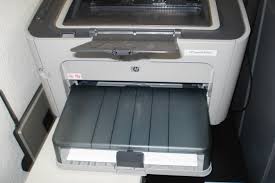Paperless Law Firm – Is Your Law Firm Really Paperless?
Running a Paperless Law Firm is Easier Than Ever
The idea of running a paperless law firm is becoming more and more popular. A search for “paperless law firm” reveals many pages of posts on the concept. Considerations when establishing and maintaining a paperless process range from security and storage, to organization methods, to ethics. The good news for lawyers who want to have a paperless law firm is that it is now very easy to handle these issues and convert most of your processes to an electronic system.
But are YOU 100% Paperless? And is that Realistic?
This post is aimed at those paperless law firms who think they are paperless already, or how have a plan to be paperless. More than once I have spoken to a lawyer who claims that he (or his firm) is already 100% paperless. They then describe how all incoming mail is scanned, briefs are submitted electronically, and client documents are organized into a very well thought-out document management system. While a great start, these processes do not make the firm totally paperless. Unless the firm can operate without a single printer, then it really isn’t paperless. So if you think you have a paperless law firm, go and see if your firm still owns even a single printer. If so then you are generating paper, and your firm is not paperless.
Having some paper in the firm is not a bad thing. It’s unlikely that you practice exclusively in jurisdictions that accept electronic briefs. Many courts require paper briefs. In that case, for example, you must have a printer. What’s better is to acknowledge where you are still using paper and determine if the use of paper in that particular part of your process is necessary or desirable. Michael Morse has an excellent post where he acknowledges that he is “80% paperless.” He then tries to find ways to eliminate the paper where it isn’t absolutely needed. You should do the same.
Where to Find Unneeded Paper
1. Look in your office.
If you print a document and then store that document in your office, even for a short period of time, then you may have a place where you can streamline your process.
2. Look at paper going out of your office.
Sometimes the paper can be in the form of letters that could be sent electronically. Other times you may have a box of documents that you print to take to a deposition. Remember that a paperless deposition does not just mean an electronic transcript. The exhibits need to be paperless as well. You may scan the documents you use in the deposition back into your electronic filing system, but the printing and re-scanning is a paper process that could be eliminated. If you use AgileLaw’s deposition software then you will never have to print a single deposition exhibit. You can upload the electronic document, use laptops or tablets (iPad or Android) in the deposition, and save the exhibits electronically afterwards.
3. Look at your clients.
Obviously you have limited control over your clients’ processes, but often times you can review their procedures and suggest electronic methods that will save them time and money and save you hassle later on.
A paperless firm is not 100% paperless. The best practice is to review where you continue to use paper, determine if that paper is necessary and the most efficient way to operate, and then adjust your processes accordingly.


Leave a Reply